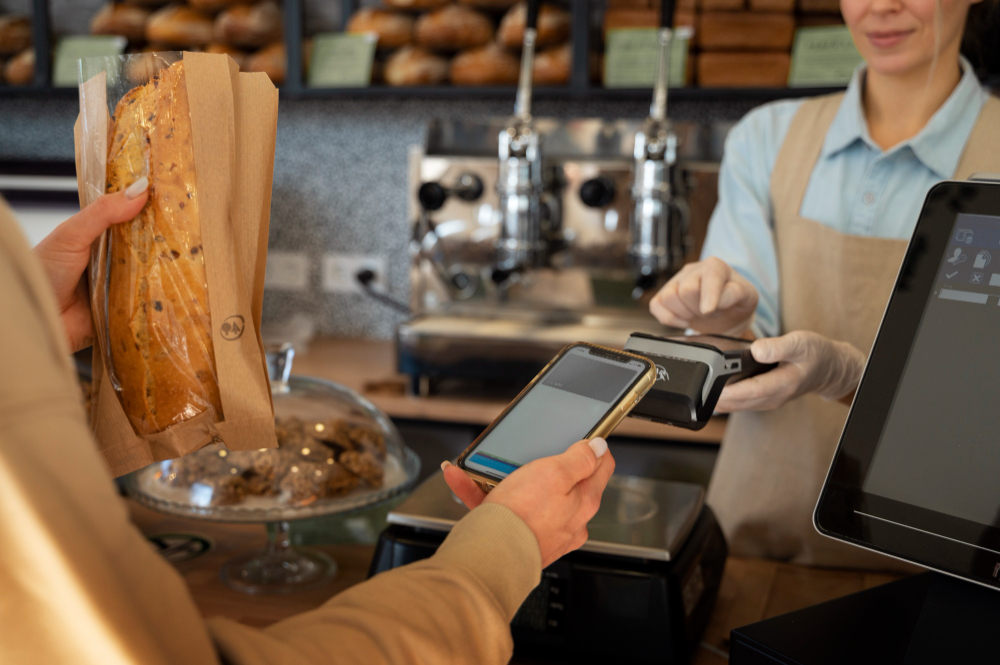In today’s fast-paced digital world, mobile payment solutions are transforming the retail industry. With the increasing adoption of smartphones and the internet, consumers are demanding more convenient, efficient, and secure ways to shop. Mobile payment solutions are not just a trend; they are a significant shift in the way transactions are conducted. This revolution is not only reshaping the retail landscape but also enhancing customer experience, improving operational efficiency, and driving sales growth.
What are Mobile Payment Solutions?
Mobile payment solutions refer to the various technologies and services that allow consumers to make payments using their mobile devices. These solutions encompass a wide range of methods, including mobile wallets, contactless payments, mobile banking apps, and QR code payments. The primary goal of these solutions is to facilitate quick, easy, and secure transactions, eliminating the need for cash or physical credit/debit cards.
Types of Mobile Payment Solutions
- Mobile Wallets: Apps like Apple Pay, Google Wallet, and Samsung Pay store credit/debit card information securely on the user’s device, enabling contactless payments at compatible terminals.
- Contactless Payments: NFC (Near Field Communication) technology allows users to tap their phones on payment terminals to complete transactions.
- QR Code Payments: Users scan a QR code provided by the retailer to make a payment directly from their mobile banking app or wallet.
- Mobile Banking Apps: Banks offer apps that enable customers to transfer money, pay bills, and make purchases directly from their bank accounts.
- Peer-to-Peer Payment Systems: Services like Venmo, PayPal, and Zelle facilitate money transfers between individuals, which can also be used for purchasing goods and services.
The Impact of Mobile Payment Solutions on Retail
Enhanced Customer Experience
Mobile payment solutions are revolutionizing the way consumers interact with retailers. The convenience of being able to pay with a smartphone simplifies the checkout process, reducing wait times and improving customer satisfaction. Features like one-click payments and digital receipts further streamline the shopping experience, making it more enjoyable and efficient for customers.
Increased Sales and Conversion Rates
The ease and speed of mobile payments encourage impulse purchases, boosting sales. Retailers that accept mobile payments often see higher conversion rates, as customers are less likely to abandon their carts when the checkout process is quick and straightforward. Moreover, mobile payment solutions often come with integrated loyalty programs, personalized offers, and rewards, incentivizing repeat business and increasing customer lifetime value.
Operational Efficiency
Mobile payment solutions reduce the burden of handling cash and managing physical payment terminals. This leads to faster transactions, shorter lines, and improved overall efficiency. Retailers can also leverage the data collected through mobile payment platforms to gain insights into customer behavior, preferences, and purchasing patterns, allowing for more informed business decisions and targeted marketing strategies.
Security and Fraud Prevention
Security is a significant concern for both consumers and retailers. Mobile payment solutions often incorporate advanced security features such as encryption, tokenization, biometric authentication (fingerprint or facial recognition), and two-factor authentication. These measures provide a higher level of security compared to traditional payment methods, reducing the risk of fraud and enhancing consumer trust.
Integration with Other Technologies
Mobile payments can seamlessly integrate with other emerging technologies such as Artificial Intelligence (AI), the Internet of Things (IoT), and blockchain. For instance, AI can provide personalized shopping experiences based on payment data, while IoT devices can facilitate automated payments in smart stores. Blockchain technology can further enhance the security and transparency of transactions, providing an immutable record of all payments.
Case Studies: Successful Implementation of Mobile Payment Solutions
Starbucks
Starbucks has been a pioneer in adopting mobile payment solutions. The Starbucks app allows customers to pay for their orders, collect rewards, and even place orders in advance. The app’s success is evident from the fact that mobile payments account for a significant portion of Starbucks’ transactions in the United States. This has not only improved customer convenience but also increased the efficiency of their operations.
Amazon Go
Amazon Go stores represent the future of retail with their “Just Walk Out” technology. Customers use the Amazon Go app to enter the store, and sensors and cameras track the items they pick up. When they leave the store, the app automatically charges their Amazon account, eliminating the need for checkout lines. This innovative use of mobile payment solutions and IoT technology offers a seamless and frictionless shopping experience.
Walmart
Walmart has integrated mobile payment solutions into its shopping app, Walmart Pay. Customers can link their credit/debit cards to the app and use it to make payments at the checkout. Walmart has also introduced features like mobile receipts and order tracking, enhancing the overall shopping experience and streamlining operations.
The Future of Mobile Payment Solutions in Retail
The future of mobile payment solutions in retail looks promising, with continuous advancements in technology and increasing consumer adoption. Here are some trends to watch out for:
- Biometric Payments: The use of biometric authentication for payments is expected to grow, offering enhanced security and convenience.
- Cryptocurrency Payments: As cryptocurrencies gain popularity, more retailers may start accepting them as a form of payment, facilitated by mobile wallets.
- Augmented Reality (AR) and Virtual Reality (VR): These technologies can create immersive shopping experiences, with mobile payments enabling seamless transactions within AR/VR environments.
- Voice-Activated Payments: Voice assistants like Amazon Alexa and Google Assistant are likely to integrate payment functionalities, allowing customers to make purchases using voice commands.
FAQs
- What are mobile payment solutions?
Mobile payment solutions are technologies and services that allow consumers to make payments using their mobile devices, such as smartphones or tablets. These solutions include mobile wallets, contactless payments, QR code payments, mobile banking apps, and peer-to-peer payment systems.
- How do mobile wallets work?
Mobile wallets store credit/debit card information securely on the user’s mobile device. Users can make payments by tapping their phone on a compatible payment terminal or by scanning a QR code. Popular mobile wallets include Apple Pay, Google Wallet, and Samsung Pay.
- Are mobile payments secure?
Yes, mobile payments are secure. They use advanced security features such as encryption, tokenization, biometric authentication (fingerprint or facial recognition), and two-factor authentication to protect against fraud and unauthorized access.
- What are the benefits of mobile payment solutions for retailers?
Mobile payment solutions offer several benefits for retailers, including:
- Enhanced customer experience with faster and more convenient checkouts.
- Increased sales and conversion rates due to the ease of making payments.
- Improved operational efficiency by reducing the need for handling cash.
- Enhanced security and fraud prevention measures.
- Access to valuable customer data for better business insights and targeted marketing.
- Can mobile payments be used for online shopping?
Yes, mobile payments can be used for both online and in-store shopping. Many e-commerce websites and apps support mobile payment options, allowing customers to pay using their mobile wallets or banking apps.
Conclusion
Mobile payment solutions are undoubtedly revolutionizing the retail industry. They offer numerous benefits, including enhanced customer experience, increased sales, improved operational efficiency, and better security. As technology continues to evolve, the adoption of mobile payments is expected to grow, further transforming the retail landscape. Retailers that embrace these solutions will be well-positioned to meet the changing demands of consumers and stay ahead in the competitive market.





